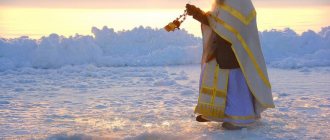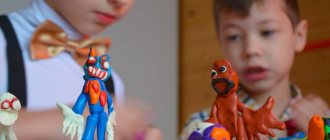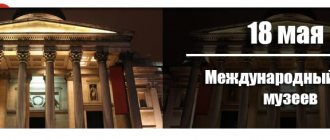In our country, every year on September 1, the Day of Knowledge is celebrated. It got its name due to the fact that it is the first day of autumn, when the new academic year begins in all Russian schools, as well as secondary and higher educational institutions. Knowledge Day is a holiday for all pupils, students, their parents, teachers and professors, as well as all those people who are in some way connected with serving schoolchildren and students. But traditionally, those who are most happy about it are those who go to school for the first time on this day. We can say that on September 1, a completely new life begins for first-graders and first-year students. This day is very exciting and memorable for them.
Holidays September 1st full list
On this day, 23 festive events are celebrated in Russia and the world, including 1 church holiday according to the Orthodox calendar. Here's what the full list of holidays looks like on September 1, 2022:
- Engineer's Day in Tanzania
- Statehood Day of the Kabardino-Balkarian Republic
- Day of Knowledge (First call)
- Fekla the beetroot maker (Andrey the teplyak)
- Acacia Day in Australia
- Ginger Cat Appreciation Day in the USA
- Polish Veterans' Day
- Journalist's Day - Taiwan
- Cherry Cupcake Day in the USA
- Constitution Day in Slovakia
- Day of the Peoples of the Middle Urals
- Independence Day in Uzbekistan
- Independence Day of the Republic of Uzbekistan
- Arbor Day in Peru
- Disaster Prevention Day in Japan
- Builders and Designers Appreciation Day in the USA
- Trade Union Peace Day is a day of random kindness in New Zealand.
- Revolution Day in Eritrea
- Autumn birthday
- Srila Prabhupada's Birthday
- Flag Day in Honduras
- Chess Day in USA
- Feast of the Don Miraculous Icon of the Mother of God
history of the holiday
In fact, in different countries the school year begins at different times; in many countries this date is variable. In Russia, for example, under Peter I, classes in schools and gymnasiums began at different times - from late August to mid-October, and rural schools traditionally began classes on December 1, when all field work was completed.
Even in the USSR, until the mid-30s, there was no single day for the beginning of the school year; it was only stipulated that children begin school in the fall. And only on September 3, 1935, a resolution was adopted on the introduction of a single day for the start of classes in all schools of the USSR from September 1.
Chronicles and historical events of September 1:
- Wreckage of the Titanic found in the Atlantic Ocean
- The world's first science fiction film, A Trip to the Moon, premiered in France.
- VGIK Foundation Day
- Birthday of the Belarusian ensemble "Pesnyary"
- World War II began
- Königsberg Fortress founded
- The first Russian gramophone record factory opened - Aprelevsky Record Plant
- Terrorist attack at secondary school No. 1 in the city of Beslan
August 31
September 1
September 2
Below you will not only find out what holiday September 1st is, but also find interesting facts, traditions and history of the most important events associated with this day.
Peace lesson September 1, 3rd grade. Abstract
Class notes “Knowledge Lesson” for September 1.
Primary school Topic: “September 1st – Day of Peace.” Goal : development of moral qualities in schoolchildren. Objectives: - introduce the meaning of the words “peace”, “symbol” and the meaning of colors in state symbols (flag); - show the causes of wars and ways to resolve conflicts; — develop the ability to understand the world and oneself, communication skills (lead a discussion, argue one’s opinion); — to instill in students respect for the value of peaceful life and the memory of civilians and defenders of our Motherland who died in terrorist attacks; — to cultivate mutual respect, kindness, a sense of teamwork and mutual understanding between students in the class. Planned results. Personal results:
- the ability to explain from the standpoint of universal moral values why specific simple actions can be assessed as good or bad;
- independently determine and express the simplest rules of behavior common to all people (the foundations of universal moral values); - in the proposed situations, based on simple rules of behavior common to everyone, make a choice about what action to take. Subject results:
- assimilation of initial ideas about culture as a product of human subject-forming activity;
— mastery of technological techniques for manual processing of materials; — acquiring skills in joint productive activities, cooperation, mutual assistance, planning and organization; - perceive texts performed by students by ear; - read texts consciously, correctly and expressively. Meta-subject results: Regulatory UUD:
- determine the purpose of the activity in the lesson with the help of the teacher;
— express your version, suggest a way to check it (based on the existing knowledge acquired); — working according to the proposed plan, use the necessary means (handouts and visual material); Cognitive learning tools:
- navigate your knowledge system: understand that additional information (knowledge) is needed to solve a learning task;
— obtain new knowledge: extract information presented in different forms (text, illustration, etc.); — process the information received: observe and draw independent conclusions. Communicative UUD:
- convey your thought to others: formulate your thought in oral speech (at the level of one sentence or a short text);
- listen and understand the speech of others; - engage in conversation in class and in life. Equipment for the teacher : letters of the keyword M, I, R (WORLD), symbols of our state, proverbs, dove stencil, “Blue Sky” stand, multimedia projector, presentation “Journey to School Country”, posters on the theme “September 1” . Equipment for students : colored paper, glue, scissors, dove stencil.
Class progress
I Org.
moment Teacher: If you woke up in the morning and saw outside the window: Everyone is dressed up and with flowers, And the house is full of fun; If you see a lot of schoolchildren walking along the road - This means that autumn has come, ………. has begun (children are finishing the “school year”) Teacher: They are not warmed by the hot sun.
The forests are still dressed in leaves, All the children have bouquets in their hands, The day, although sad, is cheerful, You are sad: - Goodbye, summer! And you rejoice: - Hello, school! Forward, guys, to new knowledge, towards inspiration and dreams! II Updating knowledge
— What unites the children in the photographs? — What happens on September 1 in Russian schools? - What is the name of this holiday? (Day of Knowledge) - According to good tradition, the first bell in the new school year calls for the first lesson in the new school year. — Today is a holiday - Knowledge Day, dedicated to the beginning of a new school year. This holiday is for everyone: from young to old. And there is no person in our country who is not affected by it. All areas of life, all ages are submissive to the mighty force. What power? (The power of knowledge). — Knowledge opens up and changes the world and its history. They force us to make new and new discoveries. This helps a person choose the right path in life.
III Formulation of the topic of the class hour
— The topic of the class hour is not difficult to decipher. It consists of three letters of the Russian alphabet: I, R, M. Make up the word (WORLD). — Formulate the topic of the class hour. September 1 is Peace Day.
IV New topic.
-What is the world?
— The explanatory dictionary gives us the following explanation of the word “world”: 1. The Universe in its totality; the system of the universe as a whole. 2. A separate part of the Universe; planet. 3. Friendly relations between someone, absence of disagreements, enmity; agreement. 4. Silence, peace, tranquility. “And in our class today there is silence, and therefore peace.” Children recite by heart V. Orlov’s poem “The House with a Blue Roof.” (Annex 1). — You will learn the proverbs that the people have written by working in groups. Each group has one task: you need to collect a proverb from phrases that you come across. Each group has its own proverb. The phrases are as follows: 1) War destroys. The world is building. 2) Happy children. Peace on the planet. (The result should be the following proverbs: 1) Peace builds, war destroys. 2) Peace on the planet – happy children.). - Look at the illustrations about peace and war. — What colors did the artist use to convey the horror and suffering that people experience during the war? (Gloomy, dark). — And for depicting peaceful life? (Light, bright, juicy). - Why? (Light and bright colors express good feelings, good mood. After all, without peace in a large-scale sense, there is no peace in the soul. Dark colors evoke bad thoughts and feelings). — Paints are not always used to convey feelings and mood. Sometimes a color symbolizes something, e.g. is a symbol of something. What is a "symbol"? (A symbol is a conventional sign, designation). — Name the symbols of our state. (Flag, coat of arms, anthem). —What does our Flag look like? (Our Flag includes three colors: white, blue and red. Each color stands for something). - Right! These colors did not appear by chance. WHITE – peace, purity and conscience. BLUE – sky, loyalty and truth. RED – courage and symbol of life. —What is a symbol of peace? In order to answer this question, guess the riddle: This is a small bird that lives in cities. If you pour crumbs for her, she coos and pecks. (Dove) Messages from teachers and children about the traditions of celebrating the beginning of the school year in different countries. (Appendix 2). — The beginning of September is not only the Day of Knowledge, but also memorable dates: September 1 is “The Day of Global Ceasefire and Nonviolence.” Although Peace Day is celebrated on September 21, it was decided to focus on this event during the first days of school. September 3 – “Day of Solidarity in the Fight against Terrorism.” Teacher's message about the tragic events of September 01-03, 2004. (Appendix 3). A minute of silence. – And now, guys, let’s remember all those who died 14 years ago (09/03/2004) in Beslan and honor their memory with a minute of silence. September 1, 1939 is the day the Second World War began. On September 1, 1939, Germany attacked Poland, which marked the beginning of World War II. The peoples learned many lessons from it, but the main one was that war must be fought before it begins. Creative work. Making a poster about the world (work in groups). — The dove is a symbol of peace, a symbol of the fight against war and violence. On each dove you will write your wish for peace for all the people of our big planet. Let our pigeons tell the whole world that children in Russia and other countries do not want wars. (Making pigeons, writing wishes. A stand is set up with a blue sky depicted. Children attach their pigeons with written wishes). V. Summary of the lesson - During the two years that you studied at school, we became one family.
We will all try to do everything possible together to ensure that our team has more successes and joys than sorrows. We must take care of others, help our comrades, respect their opinions. Live according to the laws of goodness and justice, correlate your interests with the interests of your comrades. Much depends on our friendship, even, to some extent, peace on our planet. (A trained student reads O. Vysotskaya’s poem “Under the Peaceful Banner”). (Appendix 4). Application.
No. 1. Poem by V. Orlov “A house under a blue roof.” A house with a blue roof, like a roof over the earth, blue skies. And under the blue roof there are rivers, mountains and forests. Oceans, steamships, And glades, and flowers, All countries, and all peoples, And, of course, me and you. Our huge round house is circling in the blue sky. We live under one blue, common roof. The house has a blue roof and is spacious and big. In this house we are neighbors and you are the masters. Together, you and I are responsible for wonderful housing. Because on the planet Everything is yours and everything is mine: And fluffy snowflakes, and a river, and clouds, And paths, and blades of grass, And water from a spring. The house revolves near the sun, So that we can be warm, So that every window can be illuminated. So that we can live in the world, Without swearing, without threatening, Like good neighbors or good friends. No. 2. Information about the traditions of celebrating the beginning of the school year in different countries. On September 1, all schoolchildren, students, and teachers in our country celebrate Knowledge Day. The date September 1st, as Knowledge Day, was officially included in the holiday calendar of the USSR back in 1984 by decree of the Presidium of the Supreme Soviet of the USSR No. 373-11 of June 15, 1984 “On declaring September 1st a national holiday - Knowledge Day.” Dedicated to the beginning of the school year, the holiday immediately received national status and is still celebrated to this day in many post-Soviet republics, including Ukraine, Belarus, Armenia, Kazakhstan, Moldova and Turkmenistan. The history of September 1st as a special day goes back to ancient times, namely to the 4th century AD. In 325, Constantine the Great, the Roman emperor who made Christianity the dominant religion, convened the first Ecumenical Council, which, among other things, decided to start the new year on September 1. In Rus', the New Year was celebrated in March-April, and this lasted for quite a long time. Only at the end of the 15th century did Orthodox Rus' begin to celebrate the beginning of the new year on September 1st. The first year that began in Rus' on September 1 was 1492. And this happened by decree of John III. Why does the school year begin on September 1st? All the first schools were attached to churches, so education in them began with the church new year - on September 1. Here's a simple explanation. The September “New Year” in Rus' did not last long: already in 1699, Peter the Great issued a decree moving the New Year to January 1, so as not to differ from Europe. It so happened that the year 1699 lasted only 4 months - from September 1 to January 1, when the new year 1700 began. But school has already begun in September - you can’t force students to study without a break for more than a year. In general, the tradition of starting the school year the old fashioned way on September 1 was left intact. That is why children go to school on September 1 - because previously this day was the first day of not only the school year, but also the calendar year! Although September 1 as Knowledge Day is considered an international holiday, the tradition of starting the school year on this day does not exist in all countries. In Japan, children start school in April. In Japan, the first bell rings in April and the last bell rings in March of the following year. In India, as in Japan, children start school in April. In the United States, there is generally no clearly established date for the first day of the new school year. The date is determined by each educational district: it turns out that American children from different states go to school on different days - some at the end of July, some in August, and some in September. In Australia, the school year begins in February, and in Germany - in mid-October. Spanish girls and boys begin their studies depending on the end of the harvest in different provinces, but no later than October 1. New Zealand students start school in February. South African students start school in January. French schoolchildren have more holidays than school days. In Israel, children start the school year, like us, on September 1st. But they have one very interesting tradition: every year on the line you can watch the flight of balls in the sky. Children write their wishes on balloons and release them into the sky. No. 3. Information about the tragic date 01 - 03 September 2004. 03 September - “Day of Solidarity in the Fight against Terrorism”. The appearance of this date is associated with the tragedy that happened in 2004 in the city of Beslan, when, during the assembly, on Knowledge Day, armed and aggressive terrorists broke into the school. The militants held students, their relatives and teachers captive for three days, the total number of whom was 1,128 people. As a result, over 560 people were injured and 394 died. Among the victims were military personnel, women and children. The main tragedy of this day was that most of the dead were minors. During the liberation operation, 31 terrorists were killed and one was arrested. The number of deaths that day was 1% of the city's residents. The events in Beslan became a tragedy for the entire population of Russia, as well as other countries. Every year in Beslan, on September 3, a memorial event takes place, starting at the same time when the first bomb planted in the gym detonated. Candles are lit in front of the school building, burning until the morning; near the memorial complex, white balls are launched into the sky, equal to the number of those killed. On this day, commemorative events are held in every city that was touched by the terrible hand of terror. Residents of Beslan, Volgograd, Volgodonsk, Buynaksky, Pervomaisk, Budyonnovsk, Vladikavkaz, Moscow, where there were those killed at the hands of terrorists, and other cities that are not indifferent to these losses, on September 3 pay tribute to all victims of terrorist attacks, as well as those injured during rescue operations military. On this day, funeral processions take place through the city streets, flowers are laid at memorials, and candles are lit. In memory of the dead, balloons and sky lanterns are launched, and white doves are released into the sky. In addition, various rallies are held and a minute of silence is held. Many schools host thematic lessons that highlight the problems of terrorism and methods of combating it. No. 4. Poem by O. Vysotskaya. "Under the banner of peace." We are children of a free and peaceful country. Our great people do not want war. Both our mothers and our fathers are fighters for peace, for freedom, for happiness. We study at school, grow poplars, We love hiking in forests and fields. Any path in life is open to us. We want to grow under a calm sky.
We recommend watching:
Scenario for Knowledge Day in 3rd grade Peace lesson in 3rd grade for September 1 Class notes for September 1 in 3rd grade Class notes for September 1 in 3rd grade
Similar articles:
Game program for Knowledge Day for primary school age, grades 3-4
Scenario September 1 in grades 1, 2, 3, 4
Scenario for September 1
Class hour for September 1 in 3rd grade
Class hour for Knowledge Day in 3rd grade
Day of Knowledge (First call)
On September 1, Knowledge Day is solemnly celebrated throughout Russia. This is one of those dates that absolutely everyone, young and old, knows about. Every year on the first autumn morning, crowds of boys and girls rush to the walls of their home school, dressed up, with lush bright bouquets and great enthusiasm. For still young first-graders, this is the time to meet their new teacher, the beginning of the next stage, when they have to say goodbye to the foundations of kindergarten and plunge into exciting studies. The guys are very excited, because today the world of knowledge will open to them.
Of course, not everyone celebrates the holiday with joy and a smile on their face. Students regret the end of their vacation and are reluctant to begin university life, while schoolchildren are already dreaming of the next vacation. But one thing remains unchanged - the importance and significance of the solemn day.
Today, absolutely all educational institutions in our country open their doors to the new academic year.
Read more about Knowledge Day (First Call)
Oil and Gas Industry Workers Day
Oil and Gas Industry Workers' Day (Oilman's Day) is a professional holiday for workers in the gas and oil industry. The celebration is attended by employees of quality laboratories, drilling rigs, distribution stations, pipeline communications, engineers, designers, support staff, their colleagues, friends and relatives. Students, graduates and teachers of specialized educational institutions, as well as residents of settlements for which mining is a city-forming activity, join the celebration.
Gas and Oil Industry Workers' Day is celebrated annually on the first Sunday of September and is an official holiday. In 2021, Oilman's Day falls on September 1 and is celebrated 39 times.
The essence of the holiday is to express gratitude to gas and oil industry workers for their work and to show the importance of these industries in the country's economy.
On Oilman's Day, festive concerts and themed events are held. The country's top officials and local authorities congratulate gas and oil industry workers on their professional holiday. Those who are related to the celebration gather for festive feasts.
Holiday traditions
On Oil and Gas Industry Workers Day 2021, colleagues organize feasts. Congratulations are said, wishes for health and success in responsible work are heard, and the clink of glasses is heard. Friends, relatives, acquaintances and close people join the event. The event is celebrated not only by those employed in the industry, but also by the majority of residents of the villages where deposits are being developed.
Authorities and local governments, with the support of mining companies, hold public festivities. Concerts of creative groups are organized in city squares, and stars are invited. The celebration ends with fireworks.
Television channels and radio stations broadcast programs dedicated to the profession. The main characters tell stories from their lives and work days. Top officials of the Russian Federation give speeches in honor of Oil and Gas Industry Workers' Day. They emphasize the importance of the industry and talk about its successes and difficulties. The best employees are awarded certificates of honor, medals, and valuable gifts.
Cultural institutions host exhibitions and thematic events. Students of universities and technical schools gather in cafes, restaurants or go out into nature. Celebrations are combined with active recreation: fishing, cooking over a fire. News is discussed, those gathered share plans for the future, and exchange gifts. Among them are T-shirts, cups, key chains, and sweets.
World War II began
The 20th century is one of the most difficult and conflicting in the entire history of mankind. In the past century, the world was constantly immersed in the abyss of bloody reformations and the liberation struggle of oppressed peoples not only for their civil rights, but often also for their physical existence.
One of the most tragic events of the past century was September 1, 1939, when World War II officially began.
On this day, the Gleiwitz provocation occurred, which became the trigger for Nazi Germany’s invasion of Poland.
For a decade, the militaristic Third Reich nurtured expansionist plans against weaker neighboring states.
Back in 1938, the head of the state security department and head of the SS R.
Read more about World War II began
Terrorist attack at secondary school No. 1 in the city of Beslan
The ever-growing gap between developing and developed countries is giving rise to various provocative tensions. The most radical manifestations of which are religious intolerance, extremism and terrorism.
The latter became a real scourge of the second half of the 20th and early 21st centuries. Every year thousands of people become victims of subversive acts of the terrorist underground. One of the most high-profile crimes of this kind was the terrorist attack at secondary school No. 1 in the city of Beslan. The tragedy happened on September 1, 2004.
Beslan is a small North Ossetian city.
Read more about the terrorist attack at secondary school No. 1 in the city of Beslan










